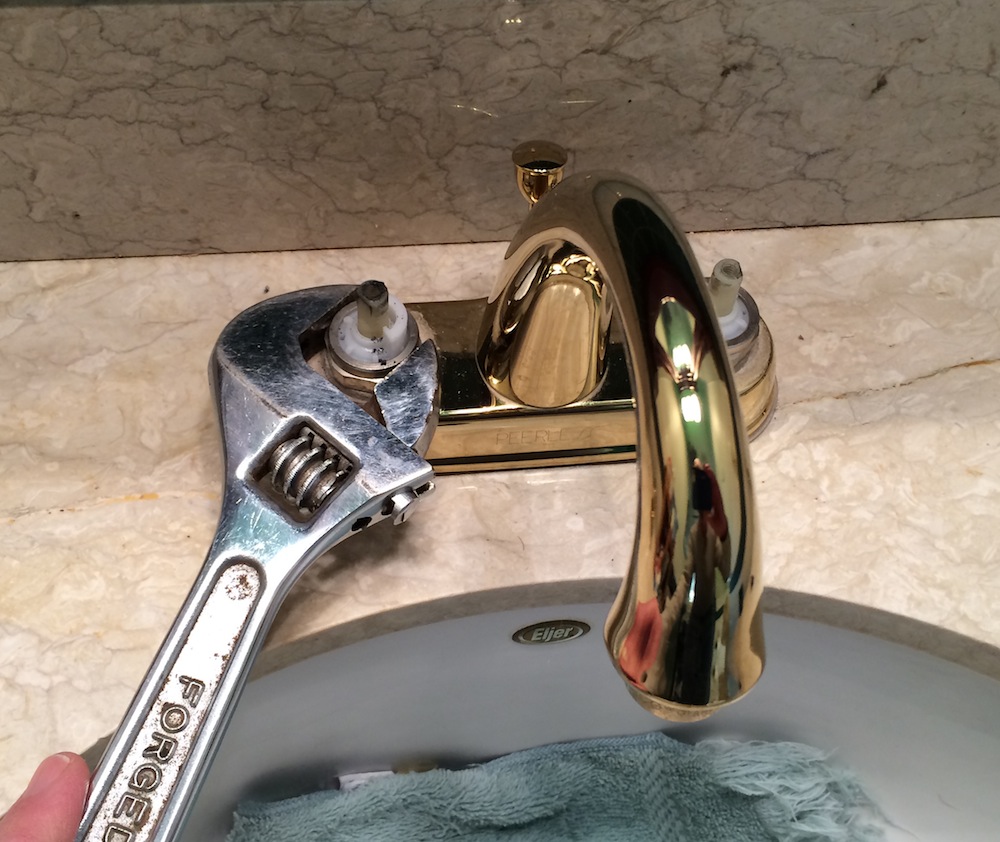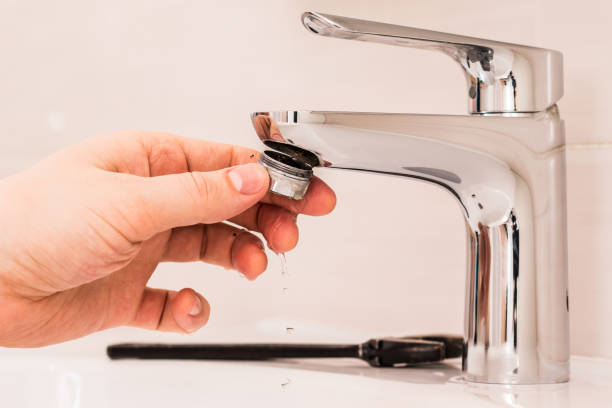Which It's Needed to Correct a Malfunctioning Faucet
Which It's Needed to Correct a Malfunctioning Faucet
Blog Article
What are your ideas regarding 4 Common Reasons for a Leaky Faucet?

Dripping faucets could feel like a small trouble, but their impact exceeds just the annoyance of the audio. From wasting water to sustaining unneeded financial prices and health and wellness risks, overlooking a leaking faucet can lead to numerous consequences. In this write-up, we'll explore why it's crucial to address this usual home concern promptly and successfully.
Wastage of Water
Environmental Effect
Trickling taps contribute substantially to water wastefulness. According to the Environmental Protection Agency (EPA), a single faucet leaking at one drip per secondly can throw away more than 3,000 gallons of water per year. This not only strains water resources yet also impacts ecological communities and wildlife dependent on them.
Step-by-Step Overview to Taking Care Of a Dripping Tap
Tools Required
Before trying to deal with a dripping tap, collect the needed tools, including a flexible wrench, screwdrivers, substitute parts (such as washers or cartridges), and plumber's tape.
Usual Tap Issues and Their Solutions
Determine the type of tap and the particular concern triggering the drip. Common troubles include damaged washers, rusty valve seats, or faulty O-rings. Describe supplier guidelines or online tutorials for step-by-step advice on repair work.
Financial Prices
Enhanced Water Expenses
Past the environmental effect, trickling faucets can pump up water costs substantially. The built up wastefulness with time converts right into higher utility costs, which might have been stayed clear of with prompt fixings.
Potential Home Damages
Additionally, extended leaking can result in damage to fixtures and surface areas bordering the tap. Water build-up can trigger staining, corrosion, and also architectural problems if left unattended, resulting in added repair service prices.
Wellness Worries
Mold and Mold Growth
The constant visibility of wetness from a dripping tap creates an excellent atmosphere for mold and mildew growth. These fungis not only endanger indoor air top quality however additionally pose wellness risks, especially for people with respiratory conditions or allergic reactions.
Waterborne Illness
Stationary water in dripping faucets can end up being a breeding place for bacteria and other microorganisms, enhancing the danger of waterborne illness. Contaminants such as Legionella bacteria thrive in stagnant water, potentially leading to major health problems when consumed or breathed in.
Do it yourself vs. Specialist Repair
Advantages and disadvantages of DIY Repair Work
While some may try to deal with a trickling faucet themselves, DIY repairs feature their very own set of challenges. Without correct expertise and tools, do it yourself efforts can aggravate the problem or lead to insufficient repair work, lengthening the issue.
Advantages of Employing a Specialist Plumber
Employing a specialist plumber makes sure that the underlying source of the leaking tap is addressed successfully. Plumbing professionals possess the know-how and equipment to diagnose and repair tap concerns efficiently, saving time and lessening the danger of more damages.
Ecological Responsibility
Individual Contribution to Preservation
Taking duty for dealing with trickling taps straightens with more comprehensive initiatives towards water preservation and environmental sustainability. Every individual's actions jointly make a substantial impact on preserving priceless resources.
Sustainable Living Practices
By focusing on timely repair work and adopting water-saving behaviors, people contribute to lasting living methods that profit both existing and future generations.
Safety nets
Regular Upkeep Tips
To avoid dripping faucets, perform routine upkeep such as cleaning aerators, evaluating for leaks, and changing damaged parts without delay. Additionally, think about setting up water-saving tools or upgrading to a lot more reliable fixtures.
Significance of Prompt Fixes
Addressing dripping faucets as quickly as they're observed protects against further water wastage and possible damage, inevitably conserving both water and money over time.
Effect On Residential Property Value
Assumption of Well-Maintained Building
Maintaining a property in good condition, including attending to upkeep issues like leaking taps, boosts its regarded worth and desirability amongst possible customers or lessees.
Impact on Resale Value
Properties with well-maintained plumbing fixtures, consisting of taps, command greater resale worths in the real estate market. Dealing with dripping taps can add to a positive impression throughout residential property evaluations and negotiations.
Verdict
Dealing with a trickling tap goes beyond plain benefit; it's an essential step towards conserving water, lowering monetary prices, and protecting wellness and property. Whether with do it yourself repair work or specialist support, doing something about it to fix leaking taps is a tiny yet impactful way to promote responsible stewardship of resources and add to a healthier, more lasting future.
How to Fix a Leaky Faucet: Step-by-Step Repair Guide
A leaky faucet may seem like a simple annoyance, but if it's not fixed promptly, that leak could cost hundreds to potentially thousands. From water damage to mold, mildew, and high water bills, even a tiny leak can be catastrophic if left unattended. Damage like this can even affect the overall value of your home, so it's important to take the right approach for leaky faucet repair. You may need the help of a plumber in some cases, but we've got a few tips you can try on how to fix a leaky faucet before calling the pros.
Four Faucet Types
When you're learning how to fix a leaky faucet, the first step is knowing what kind of faucet you're working with! There are four common types.
Cartridge Faucets
Cartridge faucets come in one- or two-handled varieties. In one-handled cartridge faucets, hot and cold water combines in a single cartridge. In the two-handled versions, hot and cold water are controlled separately and mixed in the faucet.
Ball Faucets
Ball faucets have a single lever you push up and down to adjust the pressure and rotate to change the temperature. A slotted metal ball controls the amount of water allowed into the spout.
Compression Washer Faucets
They're the oldest type of faucet, but they're still used in many homes — especially older ones. Compression faucets have two separate handles that, when turned, raise or lower the washer that seals a water valve. This valve stops water from flowing through the faucet when it is turned off.
Disc Faucets
Disc faucets rarely need to be repaired due to their maintenance-free design. The water flow is controlled by two discs — the upper one raises and lowers against a fixed lower disc, creating a watertight seal. If your disc faucet starts leaking, you may need to replace the seals or clean residue buildup from the inlets.
Fixing a Leaky Faucet
Step 1: Turn Off the Water
Whether you're learning how to fix a leaky bathtub faucet or how to fix a leaky kitchen faucet, always turn off the water supply to your working area when you're fixing a leak. The last thing you want is a flood added to your list of things to fix.
Look for the shutoff valves below your sink or around the tub and turn them clockwise to stop the water flow. If your faucet doesn't have shutoff valves, you may need to turn off the water for the whole house. Check to make sure it's off by turning the faucet on. If nothing comes out, you're ready to start the repair.
Step 2: Take Apart the Faucet
How you disassemble your faucet depends on the type of fixture you have. You can use a flathead screwdriver to remove the caps on top of the handle or handles for cartridge and compression faucets. Inside, you should see handle screws. Unscrew these with a screwdriver to remove the handle.
Disc- and ball-style faucets will typically have an inlet screw near the handle, and removing that will reveal the interior of the faucet.
Detach the Valve Stem
For cartridge- and compression-style faucets, you'll see the inner valve stem or cartridge once you remove the faucet handles. If you have a compression faucet, unscrew the brass valve stem. If you have a cartridge faucet, pull out the cartridge. If your cartridge has been in place for a while, it may require some tools or extra force to remove it due to mineral deposits.
Examine and Replace Parts
Once you've removed the parts, check them out to confirm what needs to be replaced. You may see corroded rubber washers, O-rings, stems, or cartridges. On a ball-style faucet, check the seats and springs for damage.
If you need to repair a leaky disc faucet, check the inlet and seals on the lower disc.
Once you determine what parts must be replaced, visit your local hardware store. Bring the damaged parts with you to ensure you can purchase the correct components to replace them.
Clean Valves and Faucet Cavity
If you've removed a stem or cartridge, you may notice mineral buildup in the faucet's threads. Use white vinegar to clean the valve seat by soaking it for a few minutes, then scrub it away with a soft toothbrush and rinse with warm water. You can also clean the interior of the faucet in the same way.
Reassemble the Faucet
Once your faucet is cleaned and the required parts have been replaced, it's time to reassemble it. Put the pieces back together and slowly turn the water supply back on. Doing this slowly is crucial because too much initial water pressure can damage the new hardware you've just installed.
https://homewarranty.firstam.com/blog/how-to-fix-leaky-faucet

As a fervent reader on Why Are My Faucets Dripping (And Can I Fix It Myself)?, I figured sharing that segment was worthwhile. Sharing is nice. Helping people is fun. We recognize the value of your readership.
Report this page